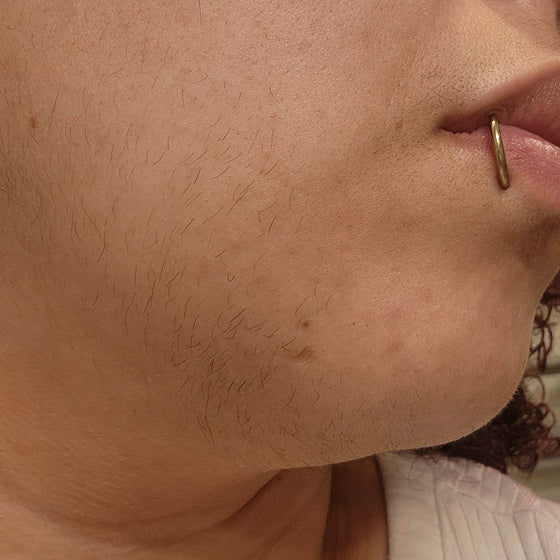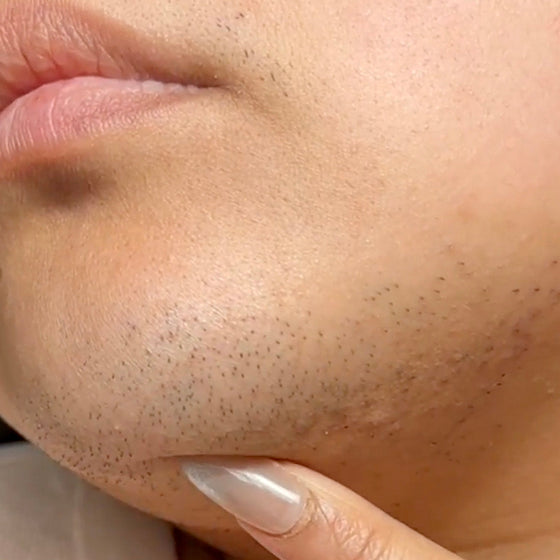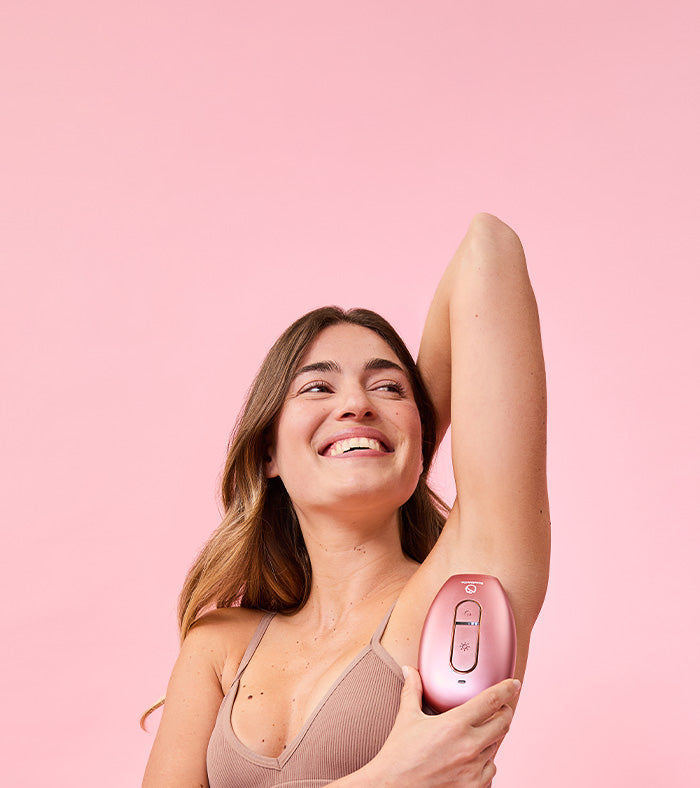Hair removal isn’t a one-size-fits-all game. With waxing and epilating, you’ve got two solid contenders, each offering smooth skin and long-lasting results. Choosing the right option often depends on a few key factors. First, consider how much pain you can handle. Next, think about the time you have available. Finally, reflect on how often you are comfortable with regrowth. Let’s dive into the nitty-gritty details so you can find your perfect match.
What’s the Difference Between Waxing & Epilating?
Waxing
Waxing involves applying warm or cold wax to your skin, which adheres to the hair. A quick yank with a strip removes both wax and hair from the root. It’s quick and works well, leaving your skin super smooth. However, you need to prepare first. This includes heating the wax and making sure your hair is the right length for the best results.
Epilating
Epilators are small, handheld devices that use a rotating set of tweezers to pluck hair directly from the root. Think of it as dozens of tiny tweezers working simultaneously. Epilators are reusable and portable, but they can take longer than waxing. This is especially true for larger areas, like your legs.
|
Feature |
Waxing |
Epilating |
|
Method |
Removes hair using warm or cold wax and strips. |
Removes hair using an electric device with rotating tweezers. |
|
Effectiveness |
Removes hair from the root; works well on coarse and fine hair. |
Removes hair from the root; may miss very fine hairs. |
|
Pain Level |
Sharp but quick pain, like ripping off a Band-Aid. |
Continuous pinching sensation that can feel intense at first. |
|
Longevity |
Smooth skin for 3-4 weeks before regrowth. |
Smooth skin for 3-4 weeks, but can catch shorter hairs for touch-ups. |
|
Preparation |
Requires hair to be at least 1/4 inch long. |
Can remove hair as short as 1/8 inch. |
|
Convenience |
Requires supplies (wax, strips) or a salon visit. |
Portable and reusable; great for at-home use. |
|
Cost |
Recurring costs for supplies or salon visits. |
One-time investment for the device. |
|
Skin Sensitivity |
Can irritate sensitive skin, especially with hot wax. |
May cause redness or irritation if pressed too hard. |
|
Time Needed |
Faster for large areas like legs and arms. |
Takes longer to cover large areas. |
|
Hygiene |
Salon waxing ensures professional hygiene; DIY waxing depends on cleanliness. |
Requires regular cleaning of the epilator for hygiene. |
|
Suitability for Areas |
Works well for all areas, including sensitive spots like the bikini line. |
Effective on most areas, but may be uncomfortable in sensitive spots. |
|
Best For |
Those who want professional results or a quick, polished finish. |
Those who prefer a DIY approach and don’t mind spending a little extra time. |
Waxing is Painful, but Epilating is Worse
Waxing pain is short and sharp, similar to ripping off a Band-Aid. The discomfort lasts for a few seconds with each strip but fades quickly. Over time, many people find the pain less intense as the hair becomes finer.
Epilating pain feels more like constant pinching, especially if you’re new to it. The good news? Your skin adjusts over time, and with consistent use, epilating becomes more tolerable. Some epilators even come with cooling or massaging features to help ease the discomfort.
Enjoy Up to a Month of Smooth Skin
Both methods provide smooth results by removing hair from the root. This means you can enjoy hair-free skin for three to four weeks. However, there are some differences in performance.
Waxing is excellent at grabbing even the finest or coarsest hairs, leaving your skin feeling baby-smooth. For the best results, your hair should grow to at least a quarter-inch. This may mean dealing with some stubble before your next session.
Epilators can grab shorter hairs, making them perfect for touch-ups between waxing sessions or as a standalone method. While they’re not as precise as waxing for very fine hairs, they’re effective at keeping regrowth under control without the wait.
Epilating can be Done at Home
Waxing can be done at home or in a salon. However, it needs supplies like wax strips, warmers, and applicators. Going to the salon can also add up over time. The upside? It’s faster than epilating and leaves you with a polished, professional finish.
Epilators are a one-time investment, making them more cost-effective over the long run. They’re also portable, so you can use them anywhere without needing a lot of setup. The downside? Sessions can take longer, especially if you’re covering large areas.
A Better, Pain-Free Hair Removal Option
While waxing and epilating are effective, neither offers a long-term solution. That’s where Lumi IPL comes in. Lumi IPL (Intense Pulsed Light) technology uses gentle light pulses to target hair follicles. This process reduces hair regrowth over time, giving you smoother skin that lasts.
With Lumi, you get the best of both worlds: the long-lasting results of salon treatments and the convenience of at-home use. Unlike waxing, Lumi IPL doesn’t require waiting for regrowth, and unlike epilators, it’s pain-free. Plus, it works on various areas, from legs to underarms and even sensitive spots like your bikini line. Say goodbye to frequent touch-ups and hello to a smoother, low-maintenance routine.
Waxing > Epilating
If you’re looking for speed and salon-quality results, waxing is hard to beat. It’s great for large areas and ensures a smooth finish every time. If you like to do things yourself, an epilator might be the right option for you. It’s reusable and effective at catching short hairs. It really depends on your pain tolerance, budget, and how much effort you want to put into hair removal.
Waxing and epilating both have their benefits, but they also have some downsides. Waxing can be expensive and needs hair to regrow. On the other hand, epilating can take a lot of time and may be uncomfortable. If you’re ready to say goodbye to hassle, Lumi IPL could be the upgrade your routine needs. It offers longer-lasting smoothness and a better solution for your needs.
Finding a hair removal method that fits your lifestyle is key. It doesn't matter if you like traditional methods or modern technology. What matters is choosing what works best for you. It should also help you feel confident in your skin.
FAQs
What’s the main difference between waxing and epilating?
Waxing involves applying wax to the skin, which removes hair from the root when pulled off. Epilating uses a mechanical device with rotating tweezers to pluck hair at the root. Both methods provide long-lasting results, but waxing exfoliates the skin while epilating may be less messy.
Which one is less painful: waxing or epilating?
Pain levels depend on individual tolerance, but waxing is often quicker, so discomfort is short-lived. Epilating may feel more prolonged since it removes hair one at a time. Using numbing creams or waxing strips for sensitive skin can make both methods more comfortable.
How does the speed of epilating compare to waxing?
Epilating is generally slower than waxing because it removes hair individually or in small clusters. Waxing covers larger areas, making it faster for hair removal. However, epilators are convenient for quick touch-ups between waxing sessions.
How does waxing affect skin differently than epilating?
Waxing removes the top layer of dead skin cells along with hair, acting as an exfoliant. Epilating doesn’t exfoliate but may cause more ingrown hairs if not done properly. Regular moisturizing can reduce irritation for both methods.
Which method is better for specific areas like the face or bikini line?
Waxing is often chosen for sensitive areas, such as the face or bikini line. This method is more controlled and thorough. Epilators can pinch delicate skin, making them less ideal for these areas unless specifically designed for sensitive use. Always use products suited to the specific area for better results.


.png?v=1727993165793&options=w_350)
.jpg?v=1724421708187&options=w_350)




